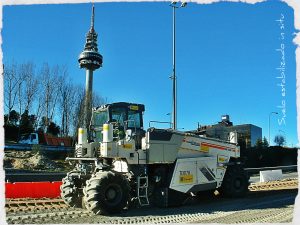
There are various reasons why stabilizing soil has and always will be common in Spain. One of the main reasons is it produces a working platform that provides good structural support for the rest of the road, allowing vehicles to travel through formerly impassable terrain, reducing the terrain’s susceptibility to water and in general improving the durability of the road, increasing its resistance to fatigue, erosion and weather.
Today, functional, economic and environmental requirements in infrastructure construction have led to greater use of soil stabilization. Due to a growing lack of quality raw material, local soil is increasingly used to design economic and long-lasting roads.
Current legislation recommends this technique for the upper layer to create level ground, for safety reasons and to have a uniform structural capacity in the entire trajectory, rather than building on untreated soil.
It also provides significant environmental advantages, as it allows soil found along the trajectory of the road to be used, even if they are of marginal or inadequate quality. Moreover, it avoids the need to create dump sites.
Soil treated with cement or lime, a practice that was known and even normalized much earlier, began to become the norm when local soil was not appropriate for construction due to high water sensitivity, susceptibility to erosion, volume changes, etc. and also when a high bearing capacity was required, depending on the size of the roadway. Today the 1975 proposals have been approved and updated in the S-EST 1 and S-EST 2 soil categories improved with cement or lime and S-EST 3 soils stabilized with cement.
In the 1990s environmental restrictions on quality aggregates led to a heavy increase in stabilized soil approaches and reclaimed road material. Both were developed thanks to the availability of powerful stabilizing-recycling machines and competitive costs.
Soil stabilization can be applied to a wide array of projects, including creating level ground for all kinds of roadways, building rural roads and forest paths, parking lots and level ground for factories, storage areas, runways and airport services, railways, lining channels and lakes, stabilizing slopes, recovering polluted terrain or structural filling.
In-place soil stabilization technical data sheet

